You see the status bar nearly everywhere on your iPhone, and it almost always looks the same. But you can use a few tricks to spice things up a bit — without jailbreaking your iPhone.
The status bar's background on iOS is transparent, so you'll see different colors and gradients as you switch from app to app. Some developers hide the status bar altogether in their apps, like for games and media viewers. You can't change the color of your status bar manually without affecting the rest of the system, such as when using Dark Mode, Color Filters, and other tools that change the overall appearance.
- Don't Miss: Give Your iPhone Mac-Like Shutdown and Startup Chimes So You Know When It Powers Off and On
By default, you'll almost always see the time, cellular signals, Wi-Fi icon, and battery in the status bar. Touch ID models will also show the cellular provider, which users of Face ID models can see from the Lock Screen, Notification Center, or Control Center.
You'll also see icons come and go automatically based on your activity, such as a navigation symbol when using driving directions, a green dot when your camera is in use, a lock when your iPhone is locked, a clock when an alarm is set, an airplane when Airplane Mode is enabled, and the AirPlay symbol when streaming media to another device. Other images you'll see periodically include SharePlay, headphones, network activity, and Personal Hotspot's chain.
For something more permanent, try some of the following customizations.
- On the Gadget Hacks Shop: MagSafe Wireless Charging Station for iPhone, Apple Watch, and AirPods, 21% Off
1. Show the Battery Percentage
The biggest thing you can customize in the status bar is how the battery icon appears. It can appear as the battery icon by itself or with a battery percentage label. If you don't need to know the exact power your iPhone has left, the solo icon does the trick with its charge level indicator.
To know the specific charge left, you'll want the battery percentage. The percentage will appear beside the battery icon on Touch ID models, complete with a % sign. On Face ID models, you can only see this depiction when you open Control Center, and it will show only the number inside the battery image in the main status bar.
You can enable or disable the feature via Settings –> Battery –> Battery Percentage. Face ID models must have iOS 16 or later installed, and no matter if Battery Percentage is on or off, you'll still see the one with the % sign in Control Center. Touch ID models can be running iOS 16 or earlier.
- More Info: How to Permanently View Battery Percentage in Your iPhone's Status Bar Instead of Battery Levels

2. Bold All Text
A little-known feature will let you bold all the text in the status bar, such as carrier name, time, and battery percentage. It's been around since iOS 15 when Per-App Settings was introduced, but it's pretty hidden since that's probably the last place you'd expect to find an option to change a system-wide preference.
The trick is setting your Home Screen to bold text. Doing so will make the text on your Home Screen bold, but the status bar is assigned to the Home Screen, so it will also make the status bar text bold everywhere — even on the Lock Screen. Check out our complete guide to see what else is affected by bolding the status bar.
- More Info: This Hidden Trick Lets You Bold Text in Your iPhone's Status Bar for a Heavier Look System-Wide
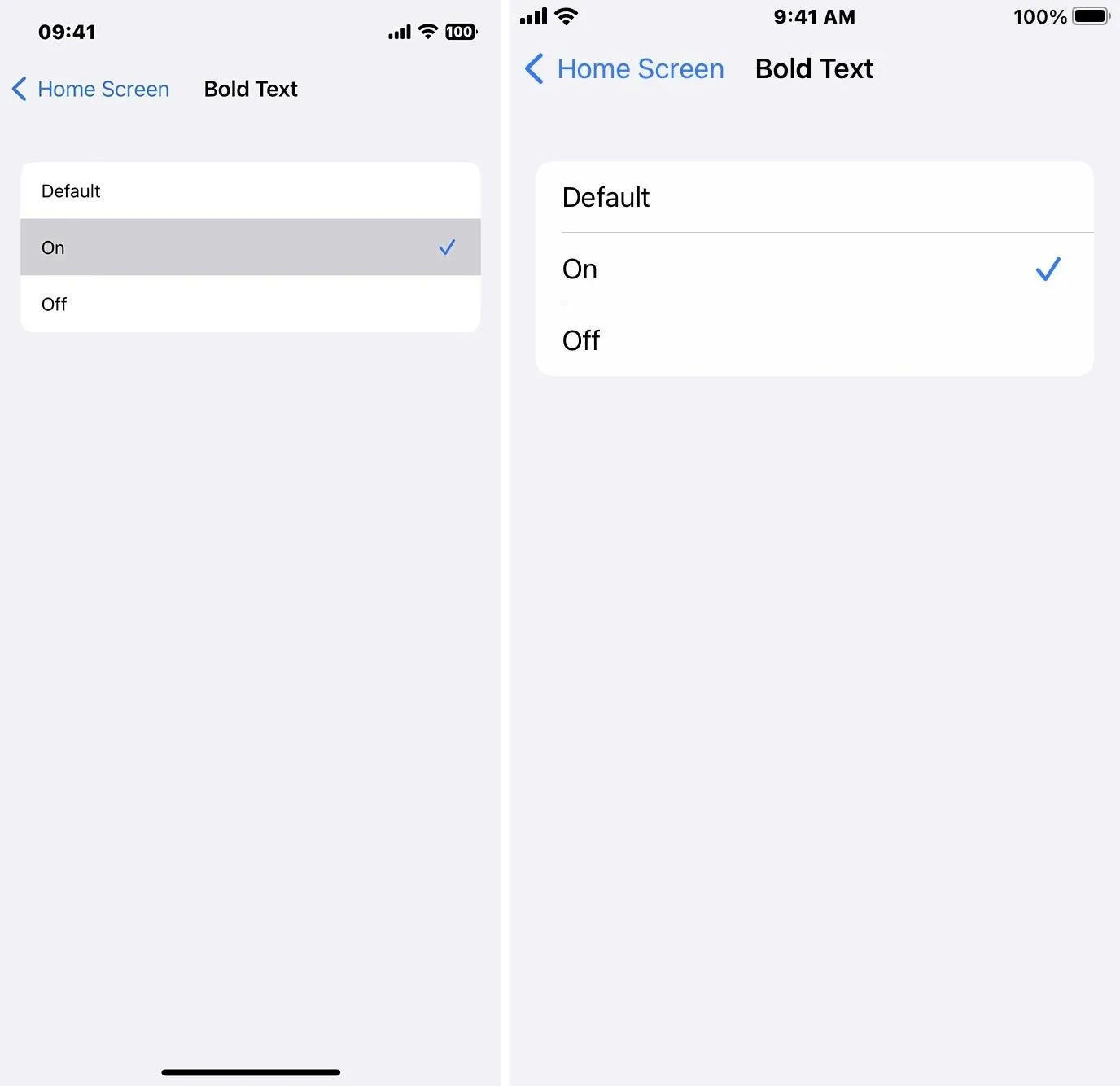
3. Add a Custom Icon
Whenever you start a focus, you'll see its icon in the status bar until you or iOS stops it. If you want a specific icon in your status bar to show your current mood, remind you of something, or motivate you, to name a few reasons, turn on its associated focus.
If one of the default focus icons doesn't work for you, like Driving's vehicle icon, Gaming's rocket ship, and Do Not Disturb's crescent moon, create your own focus with the icon you want.
- Don't Miss: Home Screen Customization Just Got Even Better for iPhone with 15 Important New Features
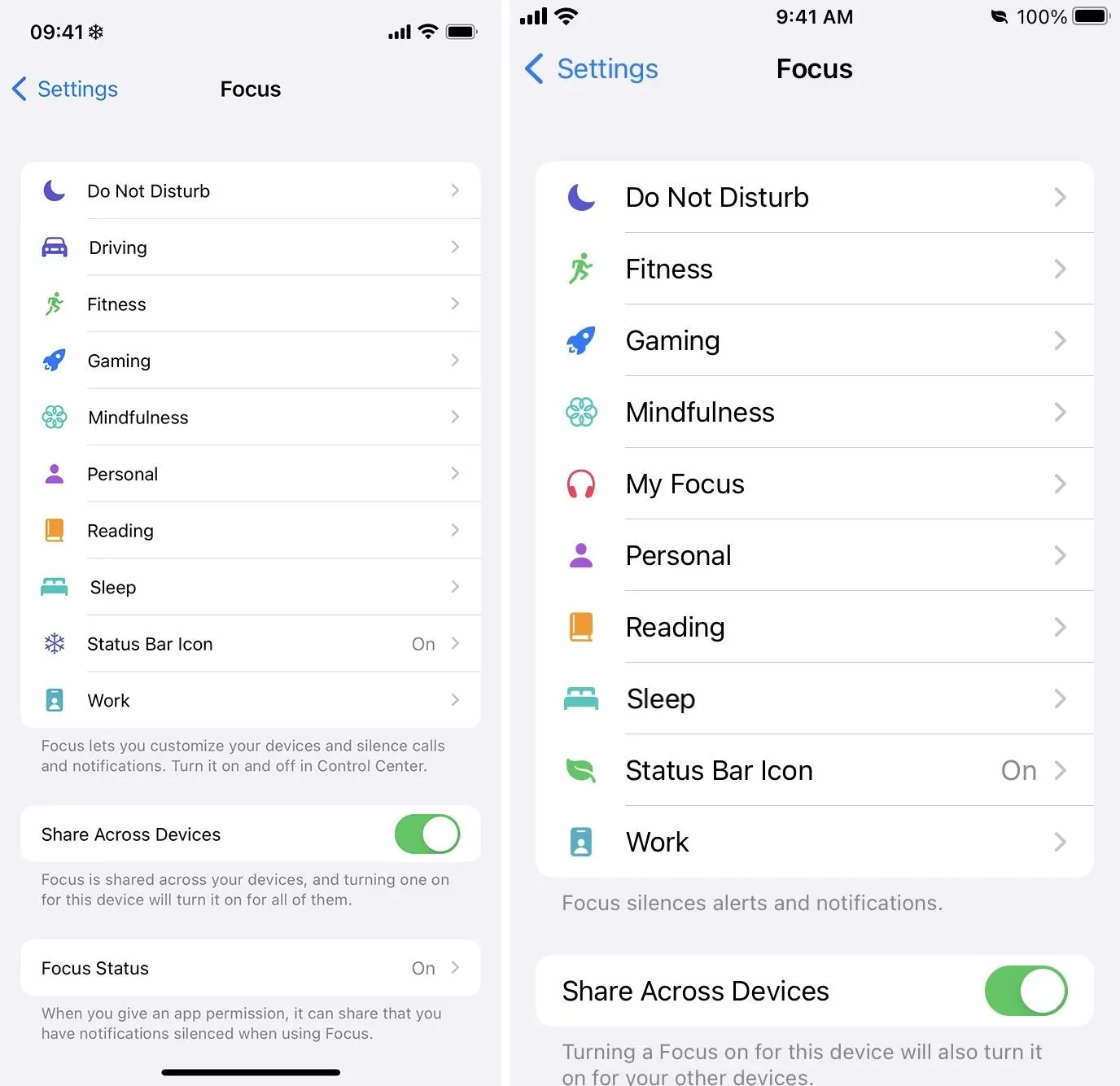
Go to Settings –> Focus, then hit the plus (+) sign. You may need to delete a focus if you've already reached ten total focuses. Choose "Custom," name the focus, then choose the image. There are currently 47 icons, including a smiley face, snowflake, fire, bicycle, and paw print.
You can then customize other aspects of the focus, such as the schedule. If you want it to act as if you don't even have a focus on — if you just one to see the icon — you can choose not to silence notifications from people and apps. If you don't set a schedule, you can turn it on manually via Control Center.
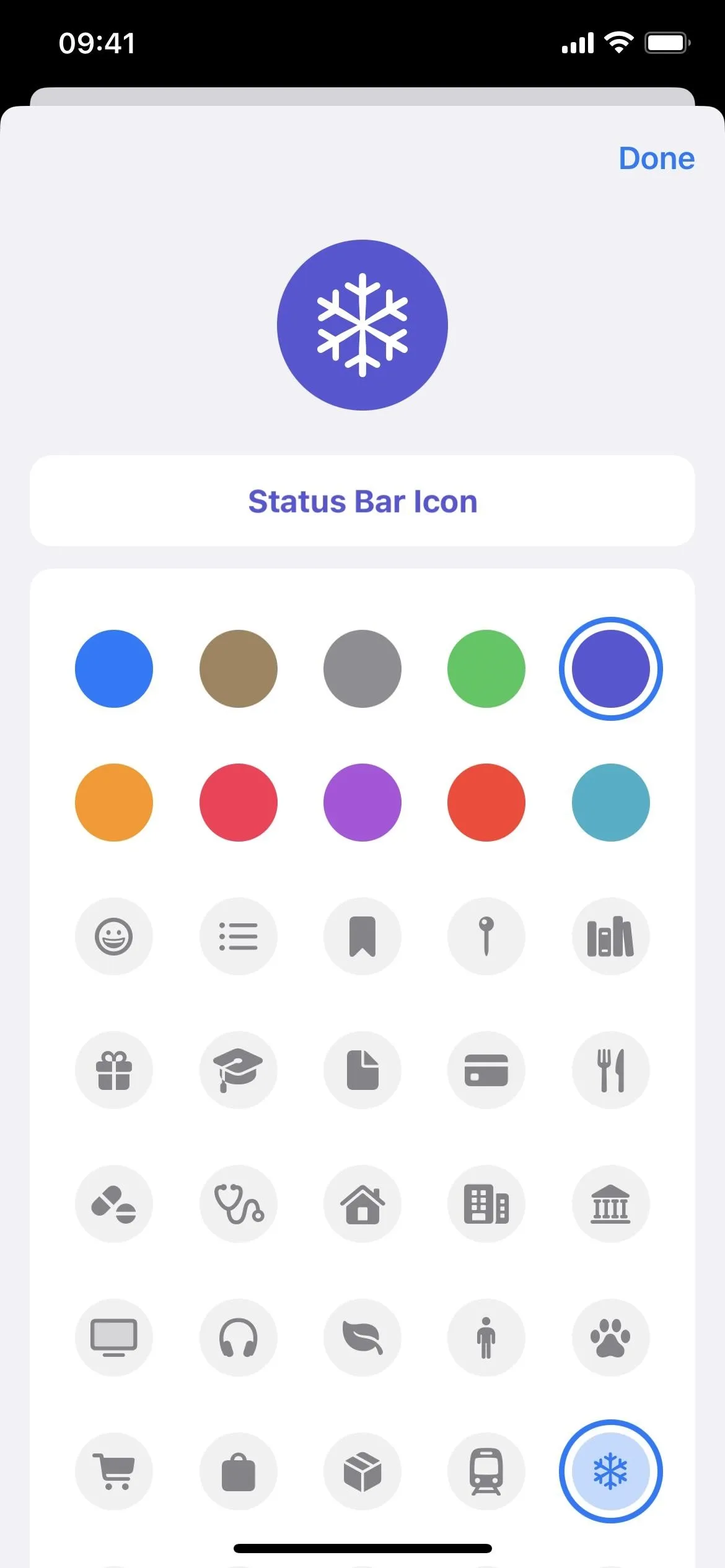
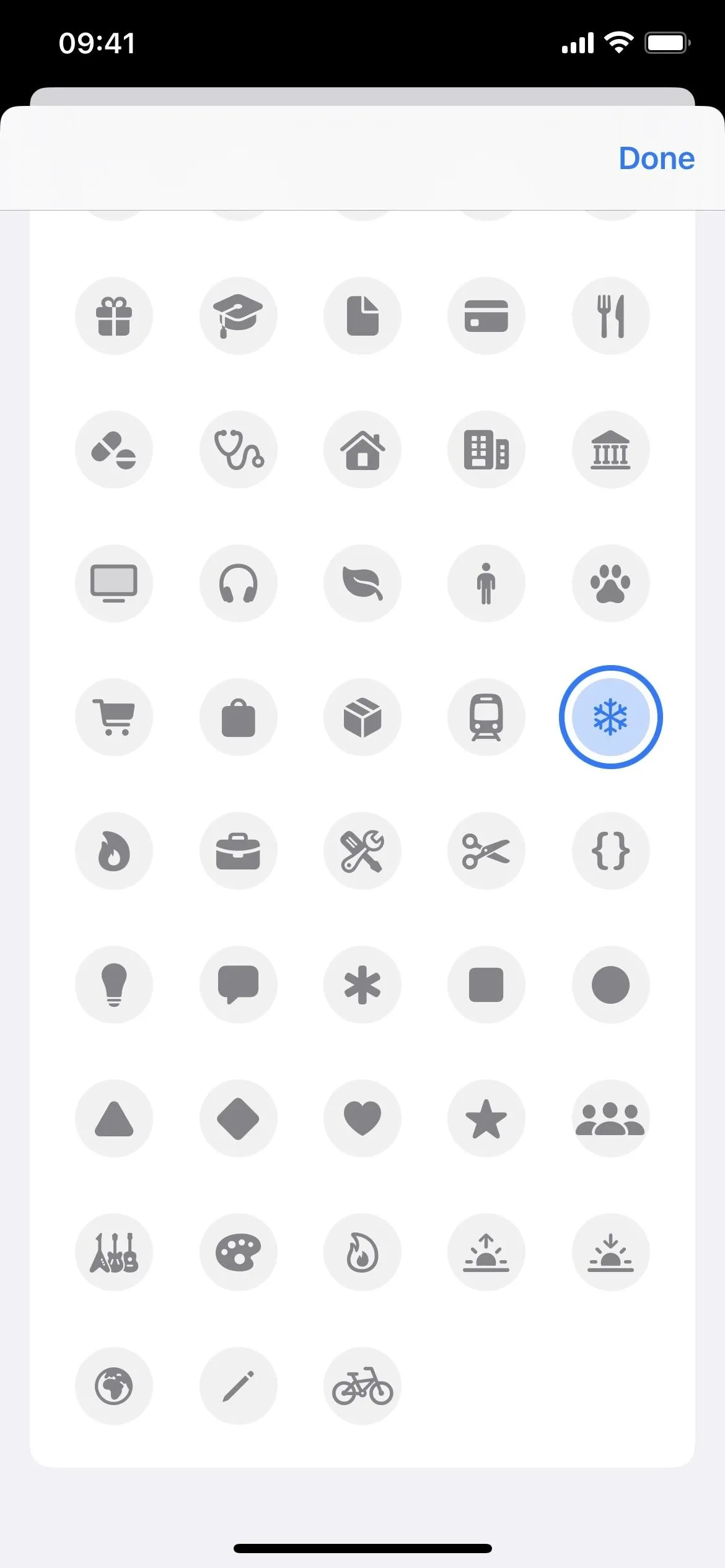
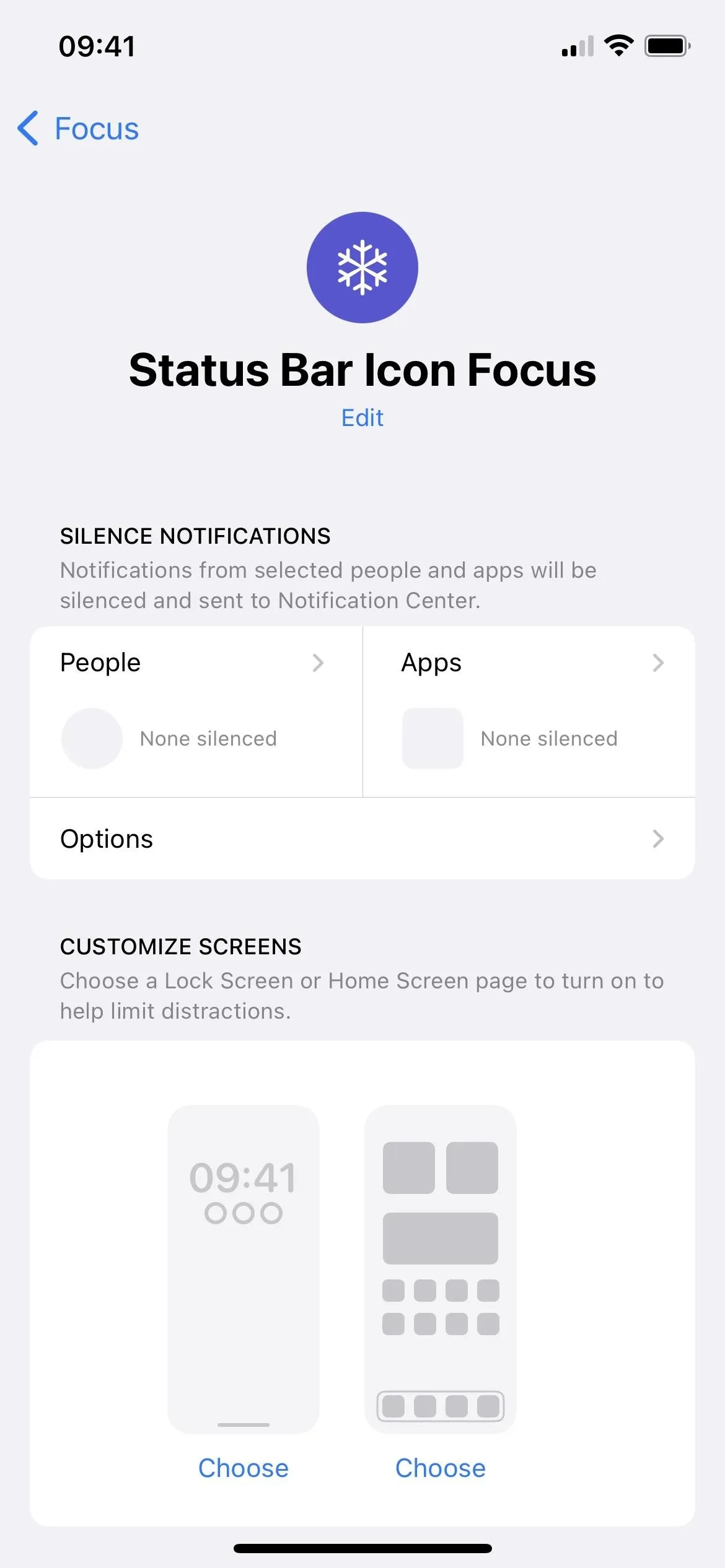



4. Enable Low Power Mode
Turning on Low Power Mode will make the battery icon in your status bar yellow. It's a small change, but a change nonetheless. If you have a Touch ID model, enabling Low Power Mode automatically enables the battery percentage, as seen above, so you can kill two birds with one stone.
Now, enabling Low Power Mode does have its ups and downs. It will disable itself once your battery increases to an 80% charge, but it won't if you enable it when it's already at or above 80%. It also stops or lessens features you may want or need to use frequently, such as some 5G access, screen brightness, the always-on display, screen refresh rates, and email fetch.
See our complete guide on Low Power Mode to find out more.
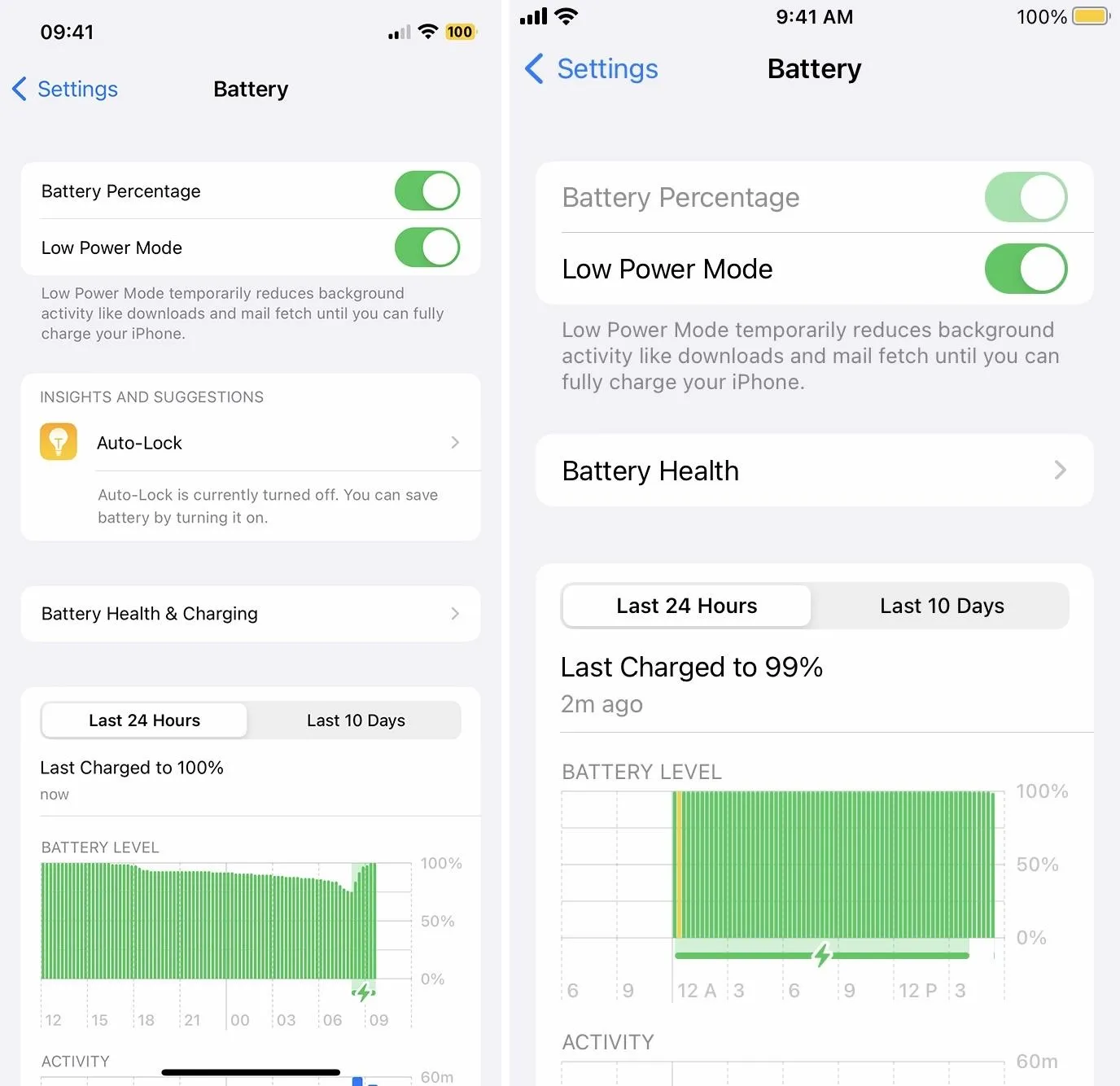
Note that the battery icon is affected by color changes you apply system-wide, such as Classic Invert and Zoom Filters, so you can make the yellow a different color, like blue, white, or black. With Low Power Mode off, you can get colors like purple, aqua, and more.
5. Show the Location Services Icon
By default, the location arrow icon appears in your status bar whenever an app is currently using your location. For example, it should always be visible when apps like Maps are open, and it'll appear briefly when you open Weather to check your local forecast. Any time an app requests your location, it'll show up.
There's not much you can change about that, but you can customize if the arrow appears in the status bar when various system services request your location. Visit Settings –> Privacy & Security –> Location Services –> System Services –> Status Bar Icon, and toggle it on or off.
When on, an arrow will appear in your status bar any time an enabled service listed above the Status Bar Icon switch requests your location. These include services like Find My iPhone, Wi-Fi Calling, and HomeKit.
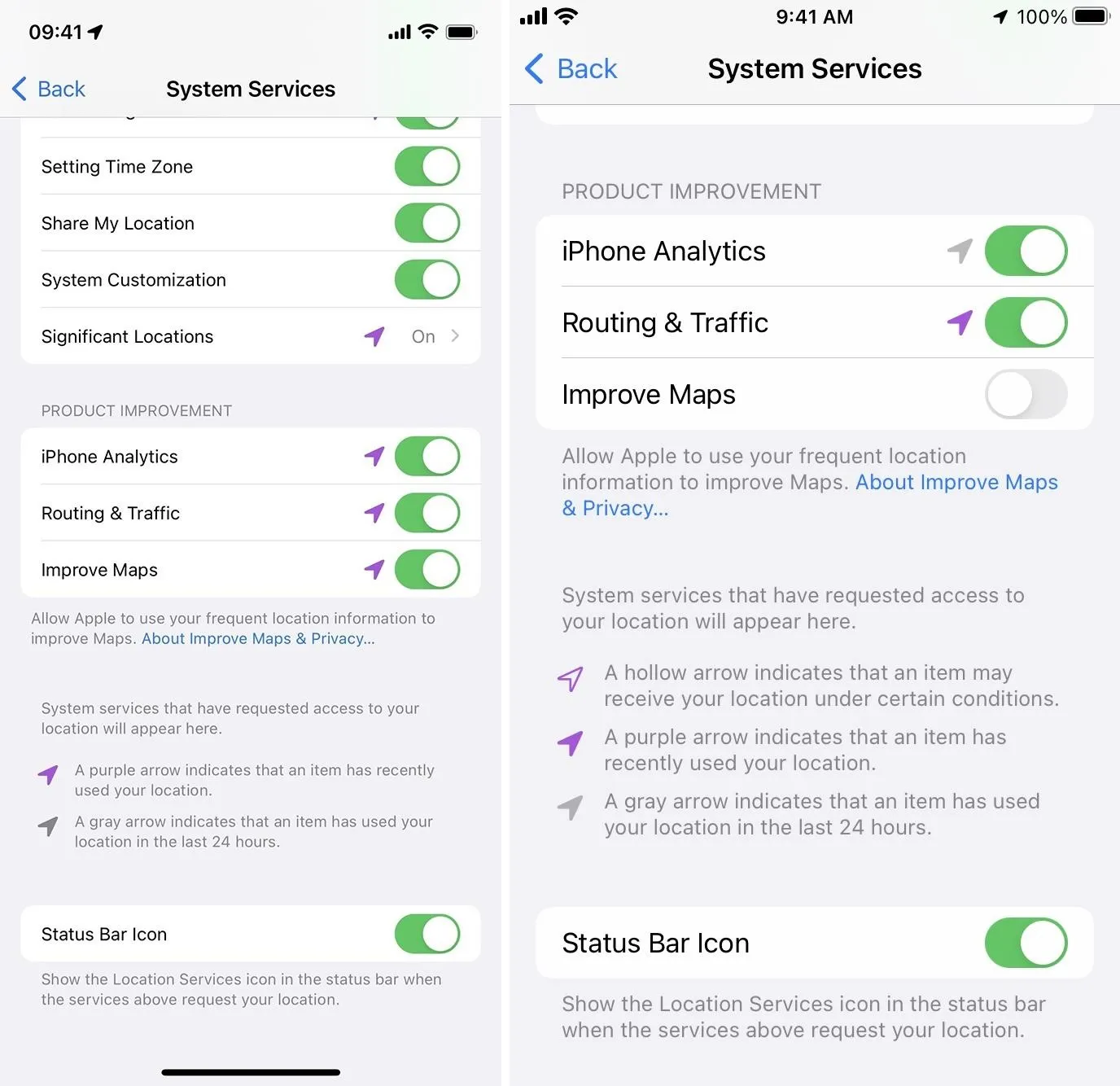
Other Things You Can Customize
- Turn on RTT/TTY in Settings –> Accessibility to see a teletype icon, which looks like an old-style landline handset on-hook with buttons under it. You don't have to use RTT/TTY while on phone calls, so it can be a purely aesthetic option.
- Enable a VPN to see the VPN icon and browse the web more securely.
- Enable the Portrait Orientation Lock to see its lock icon and prevent apps from using landscape mode. (It appears in Control Center only on Face ID models.)
- Activate two SIMs to see two cellular icons and use two different plans. T-Mobile gives free three-month trials for eSIM compatible phones.
- Enable call forwarding on GSM plans to see its phone icon. (It appears in Control Center only on Face ID models.)
- Enable Voice Control to see its microphone icon and control your iPhone using words and phrases.
- Enable Airplane Mode to see its airplane icon and disable cellular, Bluetooth, and Wi-Fi.
Cover photo and screenshots, by Justin Meyers/Gadget Hacks
.






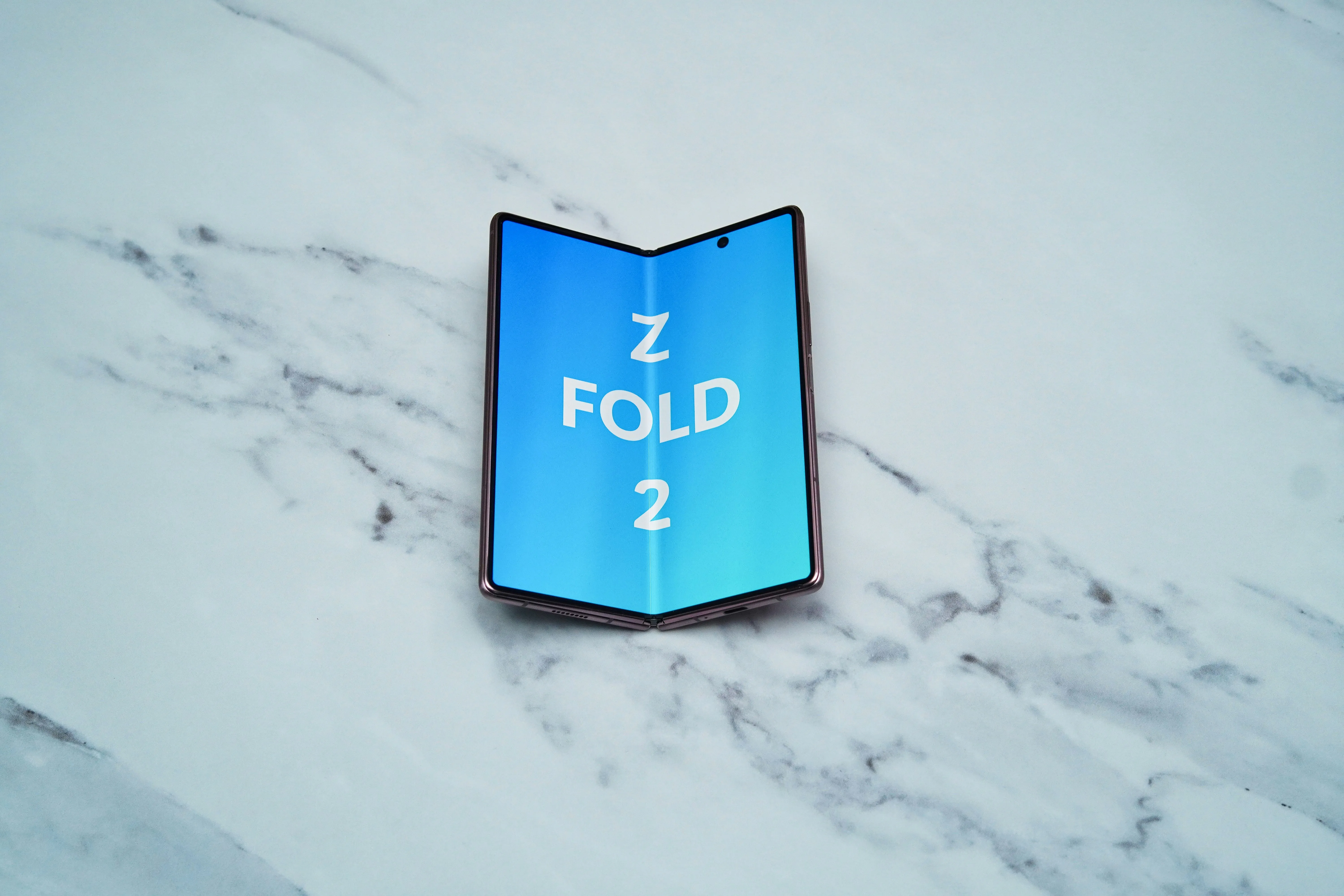
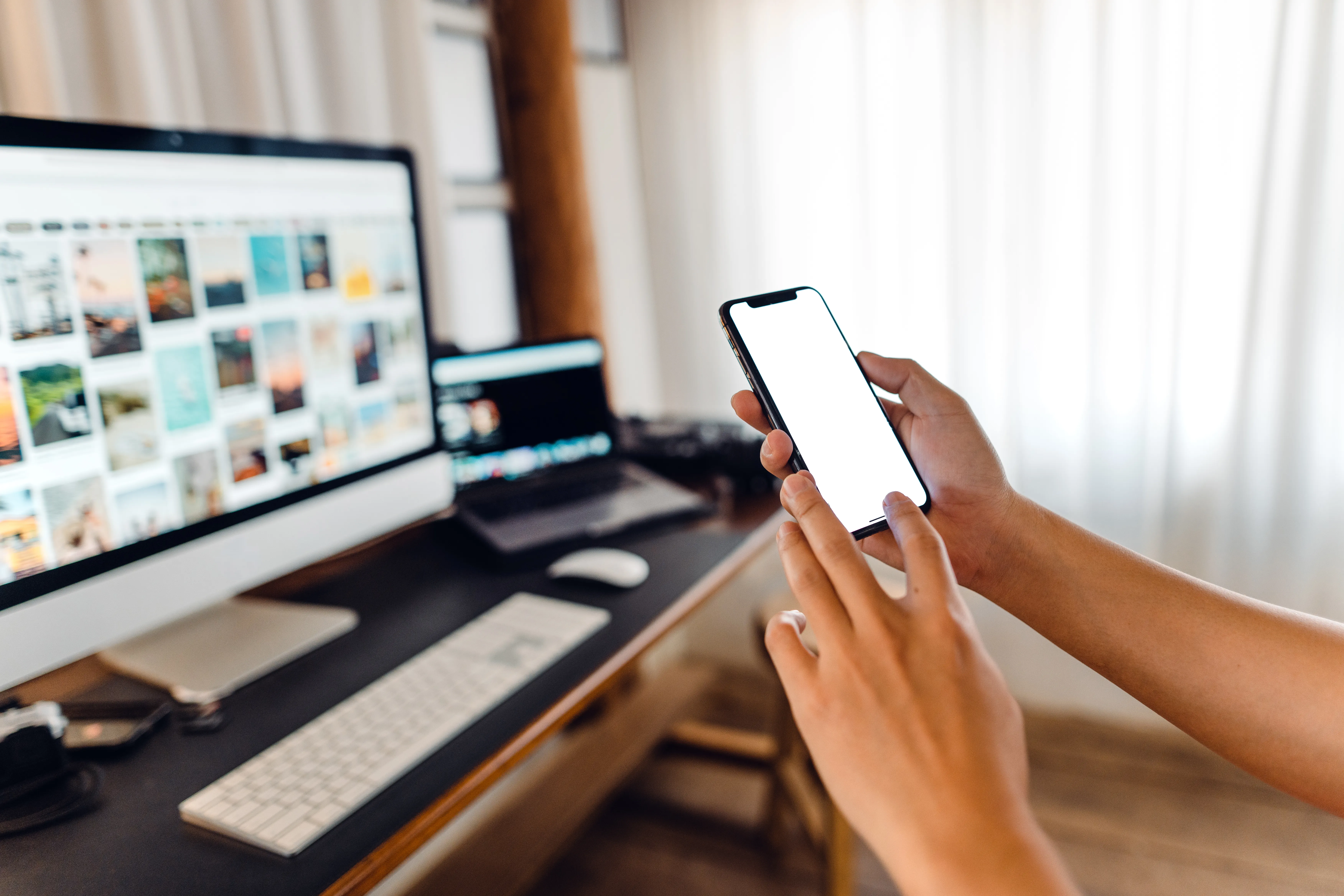














Comments
Be the first, drop a comment!